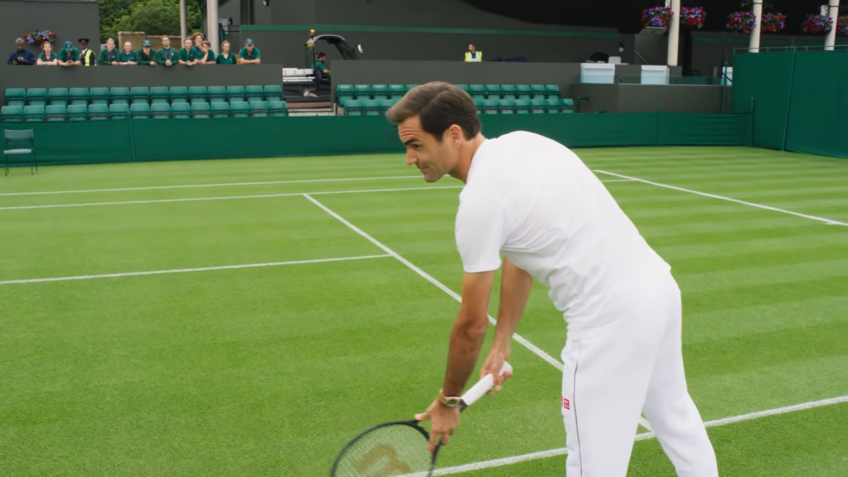Roger Federer is widely regarded as one of the greatest tennis players of all time. One of the key components of his game is his serve, which has been a weapon for him throughout his career. In this article, we’ll take a closer look at Federer’s serve, analyzing its Strengths And Weaknesses, and comparing it to other top players in the game.
The Federer Serve: A Closer Look
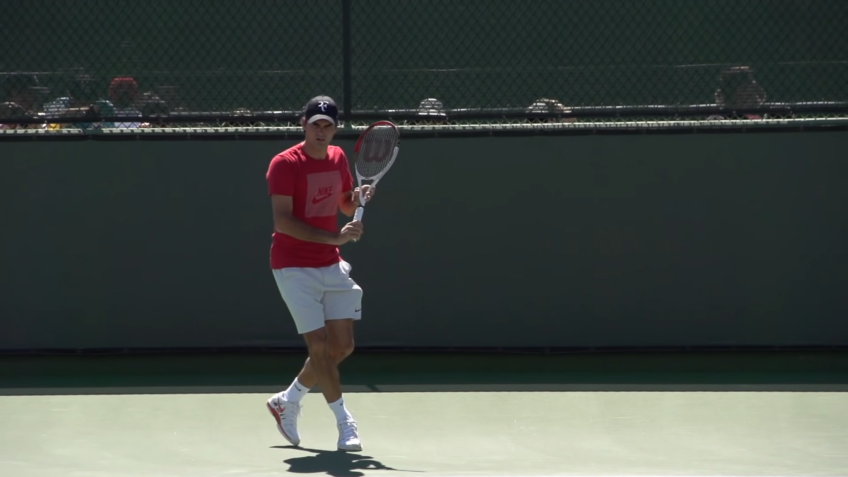
The Federer serve is widely considered one of the best in the game. With a smooth, fluid motion that allows him to generate a lot of power while still maintaining control over the ball, it’s a weapon that has been a key component of his game throughout his career.
One of the key strengths of the serve is his ability to hit aces with great consistency, which allows him to finish off points quickly and effectively. His serve also has a lot of topspin, which helps to keep the ball low and make it difficult for opponents to return.
Federer’s serve is known for its precision, power, and consistency. He has a smooth, fluid motion that allows him to generate a lot of power while still maintaining control over the ball.
Speed
One of the key elements of Federer’s serve is its speed. He is able to generate a significant amount of power on his serve, which allows him to hit aces and put pressure on his opponents.
Hiss serve typically reaches speeds between 130 and 140 mph, with his fastest recorded serve clocking in at 151 mph. This speed is made possible by his smooth and fluid serve motion, which allows him to generate power without sacrificing accuracy.
Stance
His serve stance is relatively standard for a right-handed player, with a few subtle variations that set it apart.
Federer stands with his feet shoulder-width apart, with his weight evenly distributed between both legs. He then takes a small step forward with his left foot, which helps him generate power on the serve.
One of the unique features of Federer’s serve stance is the position of his back foot. Instead of having it pointing straight ahead, he turns it slightly to the side, which allows him to open up his hips more and generate additional power on the serve.
Another unique feature is the position of his racket. He holds the racket with a continental grip, which is a grip that is similar to the Eastern grip but the racket head is held slightly more open. This grip gives him more control and precision on the serve.
Ball Toss
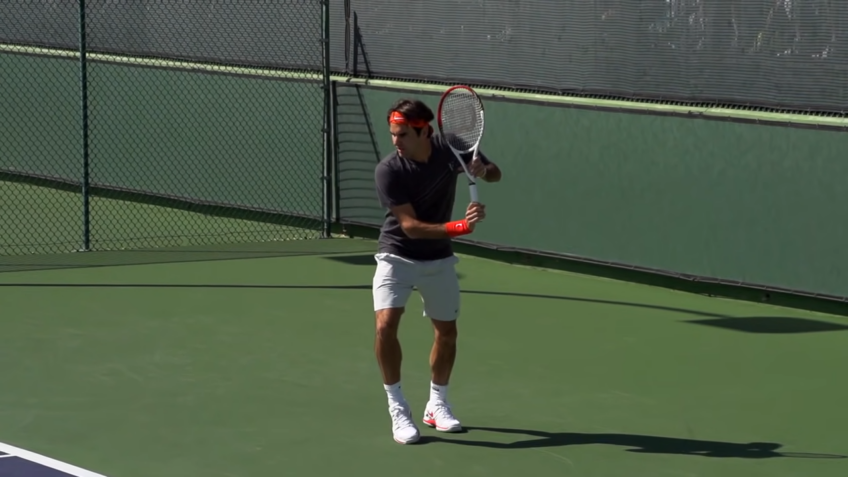
Federer’s ball toss is relatively high and consistent, typically reaching a height of around 9 feet. This allows him to hit the ball at the top of its trajectory, which helps generate power and spin on the serve.
The consistency of his ball toss is also notable, as it allows him to hit the ball with the same trajectory and pace on each serve, making it difficult for opponents to predict where the ball will land.
He holds the ball with his non-dominant hand, typically his left hand, and tosses it with a slight upward motion. He also makes sure to keep his eyes on the ball throughout the toss, which helps him maintain accuracy.
The ball toss is also an important aspect of his serve, it allows him to hit the ball at the top of its trajectory, which helps generate power and spin on the serve. The consistency of his ball toss is also notable, making it difficult for opponents to predict where the ball will land.
Spin
Federer typically hits his serves with a moderate amount of topspin, which allows him to hit the ball with a higher trajectory and to bring the ball down into the service box. This can make it more difficult for opponents to hit an aggressive return and also allows him to be more aggressive on his second serve.
He also has the ability to hit a variety of spins on his serve, including a flat serve, a slice serve, and a kick serve. Each of these serves serves a different purpose, such as the flat serve for power, the slice serve for deception, and the kick serve for added height.
Federer is also able to control the spin on his serve, which allows him to hit different parts of the court with the same trajectory, making it difficult for opponents to predict where the ball will land.
Precision
Federer is known for his ability to place his serves with great accuracy, hitting specific areas of the service box with regularity. He is able to do this through a combination of his smooth and fluid serve motion, his consistent ball toss and the precision of his racket work.
He also has a high level of control over the pace of his serve, which allows him to hit the ball with different speeds depending on the situation. This can make it difficult for opponents to predict the speed of his serve and adjust their timing accordingly.
In addition to his serve, Federer’s net play is also quite precise, he is able to hit volleys with great accuracy, which often results in quick points.
The Evolution of His Serve Over Time
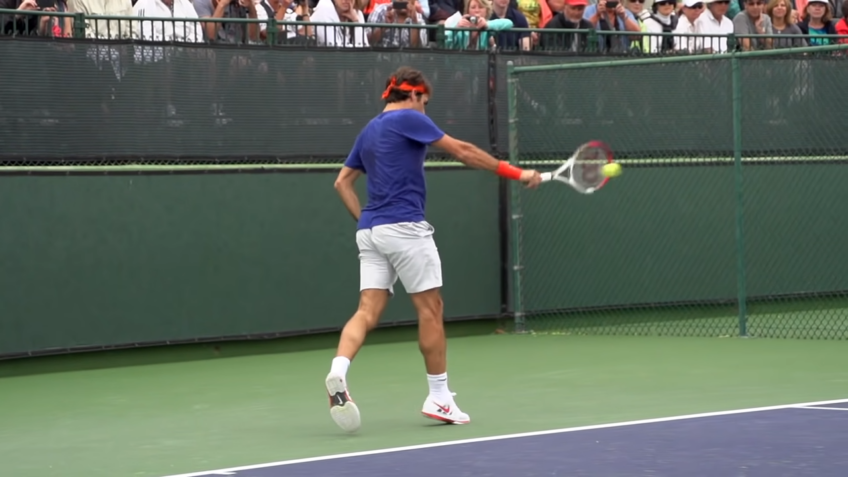
Throughout his career, Roger Federer’s serve has evolved and improved. In the early days of his career, his serve was known for its consistency, but not necessarily for its power.
However, as he has grown older and gained more experience, he has been able to develop more power in his serve.
Additionally, he has worked to add more variety to his serve, such as hitting more slices and using different placements on the court. This evolution of his serve has allowed him to remain competitive at the highest level of the game.
Weaknesses
Despite its many strengths, there are a few weaknesses in Federer’s serve that can be exploited by opponents.
One of these is his tendency to hit a lot of double faults, especially in high-pressure situations. Another is his lack of a big, booming serve like some of the other top players on tour. This can make it easier for opponents to return his serve, especially on faster surfaces.
Additionally, his serve is not as big and booming as some of the other top players on tour, which can make it easier for opponents to return. Despite these weaknesses, his strengths far outweigh them and make his serve a weapon that is difficult for opponents to handle.
One weakness that Federer has is that he is not as dominant on his second serve as he is on his first serve. His second serve is generally not as fast or as heavy as his first serve, making it more vulnerable to attack by his opponents.
Another weakness is that he may not be as consistent as he once was, particularly on his second serve. As he got older, his serve percentage has dropped slightly and his double faults have increased.
Additionally, Federer’s serve can be vulnerable to high windy conditions, as it makes it difficult for him to control the trajectory of his serves.
Finally, Federer’s serve is not as effective on slower surfaces such as clay, where the ball doesn’t bounce as high, making it harder for him to hit his usual serve with the same power and trajectory.
Comparing Federer’s Serve to Other Top Players
When compared to other top players on tour, Federer’s serve is not as fast or as powerful as some of the others. For example, players like Novak Djokovic and Rafael Nadal have much bigger serves, which can make it difficult for opponents to return. However, Federer’s serve is known for its precision and consistency, which can make it just as effective as the bigger serves of other players.
Mastering the Federer Serve: Tips and Techniques
If you’re looking to improve your own serve, studying the Federer serve can be a great way to pick up tips and techniques. One key aspect is to focus on developing a smooth and fluid motion, as this will help generate power while maintaining control over the ball. Additionally, working on adding topspin to your serve can make it more difficult for opponents to return. Practice hitting aces consistently, and try to add more variety to your serve, such as hitting slices or using different placements on the court. It’s also important to practice serving under pressure, as this will help you maintain consistency when it matters most.
FAQ
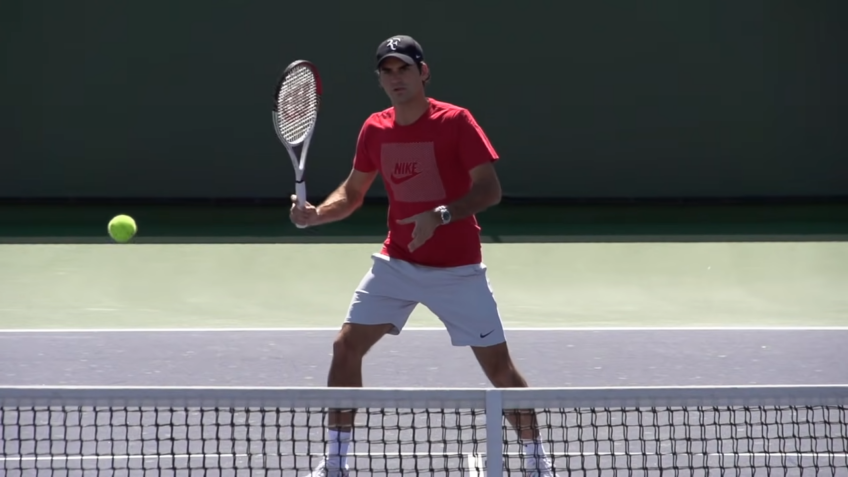
What serve does Roger Federer use?
Roger Federer primarily uses a flat serve, but he also employs different types of serves such as the slice serve, the kick serve and the body serve.
A flat serve is one that is hit with minimal spin and is hit as hard as possible. It is the most traditional type of serve and is often used to generate power. Federer’s flat serve is known for its speed and accuracy, and it is one of his most effective weapons.
A slice serve is one that is hit with backspin, causing the ball to move in the opposite direction of the spin. It is often used to create a different trajectory and pace, making it more difficult for opponents to return. Federer’s slice serve is hit with a high degree of precision, making it a useful weapon for him.
A kick serve is one that is hit with a lot of topspin, which causes the ball to jump high off the surface, making it difficult for opponents to return. Federer’s kick serve is known for its height and accuracy, making it a difficult shot for opponents to return.
A body serve is a type of serve that is aimed at the opponent’s body. It is used to disrupt the opponent’s timing and to put pressure on them to make a quick return. Federer’s body serve is a very effective weapon, as it can often result in an easy point.
How does Federer generate so much power on his serve?
Federer generates power on his serve by using a smooth and fluid motion, which allows him to generate a lot of power while still maintaining control over the ball. He also has a great deal of topspin on his serve, which helps keep the ball low and makes it difficult for opponents to return.
What is his fastest serve ever?
Roger Federer’s fastest recorded serve is 230 km/h (143 mph), which he hit during the 2010 Gerry Weber Open against Radek Stepanek. This is considered one of the fastest serves ever hit by a professional tennis player, and it is a testament to Federer’s power and accuracy as a server. Federer’s fast serve speed is one of his most effective weapons, and it is one of the reasons why he has been able to win so many Grand Slam titles throughout his career.
Who has the best serve technique in tennis?
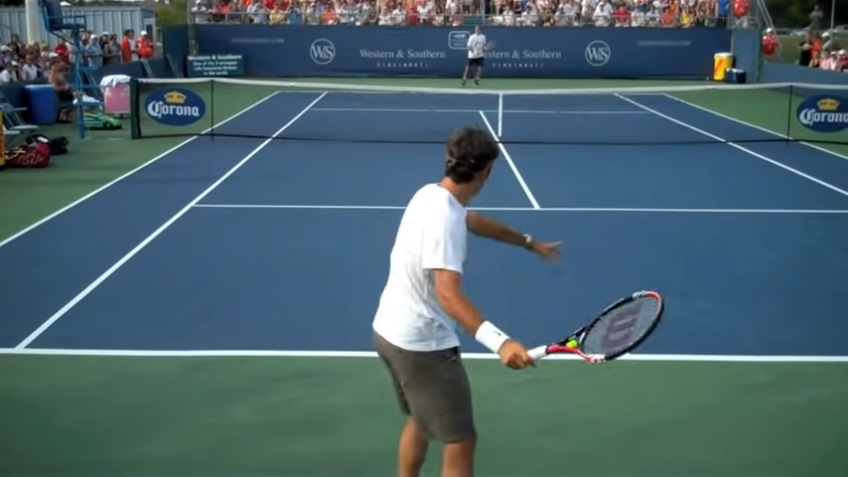
Some players who are often considered to have some of the best serve techniques in the sport include:
- Roger Federer: Considered one of the greatest servers of all time, Federer’s serve is known for its speed, accuracy, and variety. He is able to hit a wide range of serves, including a powerful flat serve, a precise slice serve, and a high-kicking kick serve.
- Pete Sampras: Often regarded as one of the greatest servers in the history of the sport, Sampras’ serve was known for its power, accuracy and consistency. He had a tendency to hit his serve with a lot of pace, which made it difficult for opponents to return.
- Goran Ivanišević: He is known for his serve-and-volley style of play and his powerful serve, which was considered one of the best in the sport during his career. He was known for his ability to hit aces consistently, and he holds the record for most aces in a career.
- Ivo Karlović: He is known for having one of the most powerful serves in the history of tennis. His serves are hit at an incredibly high speed and often result in aces or service winners.
- Rafael Nadal: Nadal’s left-handed serve is known for its heavy topspin and accuracy. He is able to hit a wide range of serves, and his ability to vary the speed and spin of his serves makes it difficult for opponents to predict where the ball will go.
Conclusion
In conclusion, Roger Federer’s serve is one of the best in the game, known for its precision, power, and consistency. Despite a few weaknesses, such as a tendency to hit double faults and lack of a big, booming serve, Federer’s serve is an important weapon in his arsenal and has helped him to become one of the greatest players of all time.

